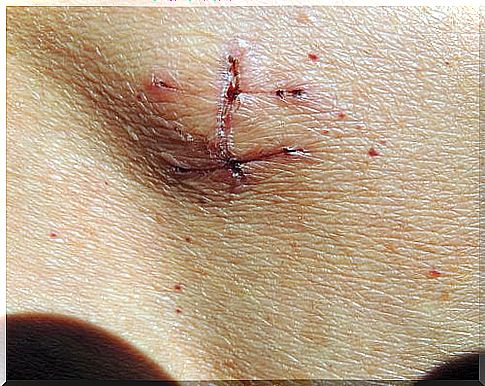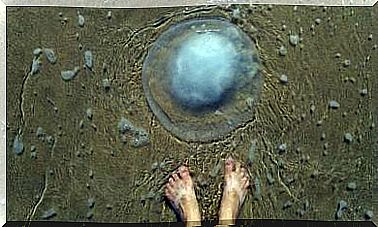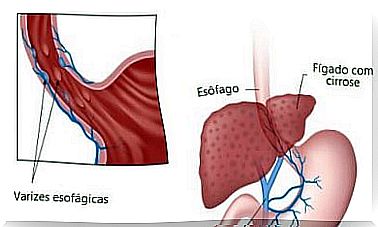Inguinal Hernia
In general, a hernia is a bulge that can be found in both the abdomen and the groin. It appears because there is a weakness or hole in the abdominal wall. In this article we will talk more specifically about inguinal hernia.
What is an inguinal hernia?
It is called an inguinal hernia at the exit of an intestinal wing, jejunum or ileum, through the inguinal canal. Inguinal hernias can be congenital, inherited, or acquired.
For example, hernias of this type in a young child may be congenital, whereas an inguinal hernia in a larger adult may be acquired.
- Congenital hernias appear in up to 30% of newborns and imply a surgical urgency. In these cases, they are usually related to the appearance of some anomaly during embryonic development.
50% of cases of recurrence are due to an infection.
- Acquired hernias typically affect adults. Most cases are usually the result of an increase in intra-abdominal pressure:
-
- Pregnancy
- Professions that require you to lift heavy weights or tense your abdominal muscles.
- Diseases like COPD
- Prostatism (effort made when urinating)

Also, the hernia can be encapsulated or unencapsulated.
- Unencapsulated hernias look like a tumor that can manifest or increase in size with effort. Therefore, coughing or bipedalism causes its size to increase, while decubitus (lying down) causes it to decrease.
- When the hernia is encapsulated, it cannot be reduced manually.
Why appear in this location?
All types of hernias are related to zones of “anatomical weakness”. That is, zones where the anatomical walls are weaker. This is what happens in the anterior abdominal wall, which is much weaker than the posterior wall.
Other abdominal wall hernias
Inguinal hernia epidemiology
- It is one of the most frequent surgical diseases. It is estimated that 1 in 30 adults will suffer from it at some point in their lives.
- Hernia surgical intervention comprises a total of 15% of all surgeries performed. This makes it the most frequent surgery in this service.
- Inguinal hernia and femoral (crural) hernia are the two most common types of hernia. Inguinal hernia affects more men, while crural hernia is typical for women.
- Hernias are the second most frequent cause of intestinal obstruction of mechanical origin.
- Recurrence is relatively frequent and, in half of the cases, it is related to an infection.
Classification of inguinal hernias
Inguinal hernia classification is based on the relationship established in the intestinal wing with the elements that travel through the inguinal canal. Thus, they are classified as:
direct inguinal hernia
The intestinal wing crosses the floor of the inguinal canal at the level of Hesselbach’s triangle. It is a region delimited by the transverse fascia and by aponeurotic fibers of the transverse abdominal muscle.
The contents descend through the epigastric artery and do not pass through the deep orifice of the inguinal canal. Furthermore, it is located behind the cremaster muscle, not included in its fibers.
It is a common type of hernia in elderly people.

Indirect (or external oblique) inguinal hernia
This type of hernia is the most common, both in men and women. The contents exit the abdominal cavity through the deep inguinal orifice.
In this case, the intestinal wing is lateral to the epigastric artery and Hesselbach’s ligament. Follows the structures of the inguinal cord inside the cremaster muscle.
In some men, the intestinal wing can even be introduced into the testicle, called an inguinoscrotal hernia.
Symptoms
Inguinal hernias usually produce mild symptoms unless complicated by strangulation or incarceration.
complications
- Incarceration: in these cases, the tumor is “stuck”. It cannot be reduced either spontaneously or manually, but there is no vascular compromise. (The intestinal wing is properly irrigated).
- Strangulation: in this case, the flow of the herniated wing is compromised. It is a surgical emergency, the intestine is poorly resistant to periods of ischemia, presenting a risk of necrosis.
When a hernia gets complicated, reduction is impossible in either case. In addition, the pain is usually very intense and fever may even appear.
Diagnosis
Diagnosis is made through a simple physical exploration, along with the medical history. In fact, in many cases the patient goes to a doctor already knowing they have a hernia.
Still, in all patients with abdominal pain, it is important to carry out a groin inspection.
For the differential diagnosis, it is important to perform it with other causes of acute abdomen.
Treatment
treatment goals
Surgical repair of a hernia is based on:
- Reintroduce the intestinal contents into the abdominal cavity, if possible without opening the peritoneum.
- Identify aponeurotic edges.
- Close the defect that caused the hernia.
Surgical treatment
Surgical treatment of inguinal hernia can be performed with open surgery or laparoscopy.
The open surgery techniques most used today are herniorrhaphy and hernioplasty.
- Herniorrhaphy. It is an anatomic repair. In other words, in this technique, the patient’s own tissues are used to repair the hernia.
- Hernioplasty. It’s a prosthetic repair. After reintroducing the intestinal material back into the abdominal cavity, a synthetic mesh is placed to reinforce its wall. Currently, this is the technique of choice due to its high success rate.
Minimally invasive inguinal hernia surgery offers both advantages and disadvantages compared to traditional techniques.
On the one hand, it reduces post-operative pain and recovery time and allows for a more aesthetic result.

On the other hand, there is a higher rate of complications, both intraoperatively and extraoperatively. Furthermore, it increases the recurrence rate, has a higher cost and the long-term results are unknown.
Because of this, it remains a controversial process, with a large number of followers, but also critics.
relapse
It is defined as the appearance of a hernia in the same repair zone. According to the form of presentation, they can be immediate or late.
In other words, a relapse is the reappearance of an infection or a disease after having managed to eradicate it “apparently”.
Recurrence depends on a series of factors, some derived from the patient and the other from the surgeon.
The dependents of the patient are:
- Age
- type of hernia
- Existence of concomitant diseases
Dependents on the surgeon are:
- inexperience
- a bad technique
- An inappropriate indication








